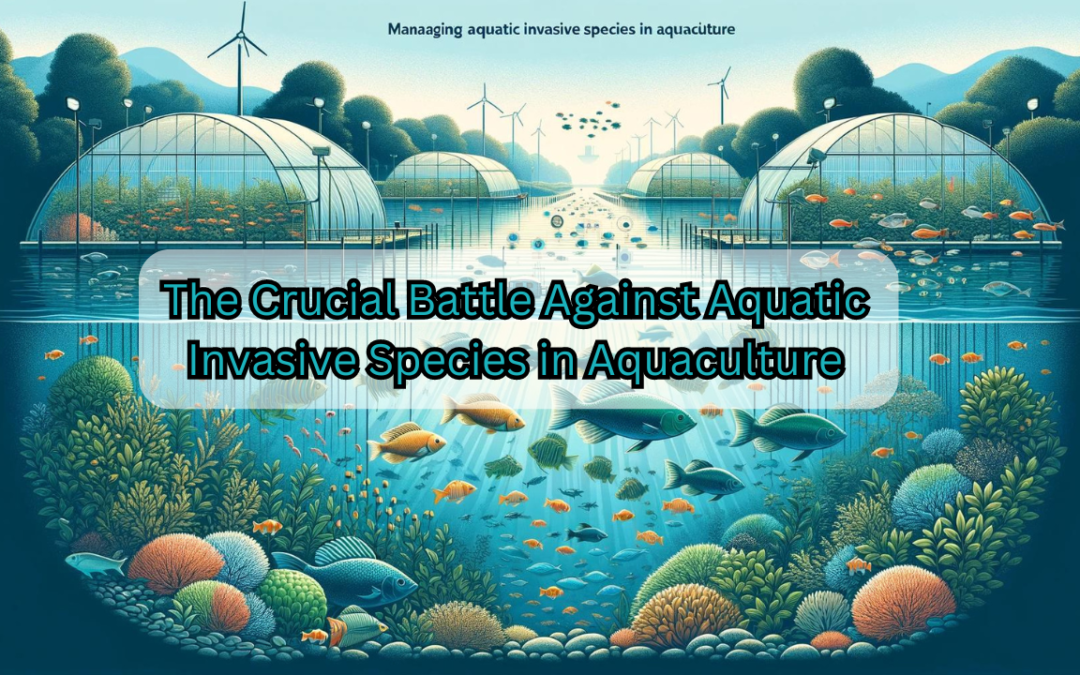In the vast and dynamic world of aquaculture, a hidden threat lurks beneath the waters, challenging the stability and sustainability of aquatic ecosystems and the thriving industry dependent on them. This threat? Aquatic Invasive Species (AIS). These non-native intruders, often introduced through human activities such as global commerce and transportation, possess the power to unbalance ecosystems, displace native species, and inflict significant financial losses on aquaculture operations. Today, let’s dive deep into the strategies and best practices essential for the effective management of AIS, with a specific focus on prevention, early detection, and the power of collaboration.
The Front Line: Preventing the Entrance of Aquatic Invasive Species
“Prevention is better than cure,” a timeless adage, holds unparalleled relevance in managing AIS. Establishing robust biosecurity protocols is the cornerstone of preventing these invasive species from entering aquaculture facilities. But what does this entail?
Biosecurity Measures: Your First Line of Defense
Biosecurity is not just a practice but a culture that needs to be ingrained in every aspect of aquaculture operations. It begins with thorough checks of water sources for invasive species and extends to in-depth risk evaluations of incoming stock. Quarantine procedures play a critical role, isolating any potentially contaminated organisms to prevent the spread within facilities.
The Power of Early Discovery and Monitoring
Once invasive species make their way into ecosystems, the battle becomes significantly tougher. Thus, the emphasis shifts to early discovery and rigorous monitoring.
Vigilance Through Monitoring Aquatic Invasive Species
Routine sampling and analysis of aquaculture facilities and their surrounding water bodies form the backbone of early detection efforts. When AIS are identified early, aquaculture operators can deploy intervention techniques swiftly, ranging from mechanical removal to biological control, curbing the establishment and spread of these invaders.
Bridging the Gap: Sharing Information and Data
In the fight against AIS, knowledge is as potent a tool as any physical intervention. Sharing information and data on the distribution, impacts, and biology of invasive species is crucial.
Collaboration Across Borders
Effective AIS management cannot exist in isolation. It demands a concerted effort from aquaculture producers, government bodies, academic institutions, and conservation organizations. By pooling resources and expertise, stakeholders can forge comprehensive management plans and strategies that are both effective and sustainable.

Embracing an Integrated Management Approach
The battle against AIS is multifaceted, requiring an arsenal of strategies for effective management. Here’s where the concept of Integrated Pest Management (IPM) shines, combining physical, chemical, and biological control methods to tackle the problem holistically.
The Role of Regulations and Policy
Support from regulations and policies is indispensable in this fight. Stringent guidelines that govern the discharge of ballast water and regulate the trade of known invasive species can significantly mitigate the risks posed by AIS.
Conclusion: A Unified Front Against AIS
The threat posed by aquatic invasive species to the aquaculture industry and the natural ecosystems is profound. However, through diligent prevention, vigilant monitoring, and strategic collaboration, we can safeguard the future of aquaculture. Let’s remember, managing AIS is not just about protecting an industry; it’s about preserving biodiversity and ensuring the health of our aquatic ecosystems for generations to come. Join the conversation, share your insights, and let’s work together towards a sustainable future in aquaculture.
In embarking on this crucial journey, remember, every action counts. As stakeholders in this industry and stewards of the environment, the responsibility lies with us to implement these practices and foster a culture of sustainability and vigilance. The fight against aquatic invasive species is ongoing, but together, we can turn the tide in our favor.
Join Our Mission to Protect Aquatic Life
Dive deeper into the world of sustainable aquaculture and be a part of the solution against aquatic invasive species. Discover more about how you can contribute to preserving our precious aquatic ecosystems for future generations. Join our EAT Community to learn more about Aquatic Life.
Related Articles and Resources:
- Embracing Sustainability in Aquaculture: A Guide to Healthy Aquatic Farming Practices
- Building Climate Resilience in Aquaculture: A Sustainable Future for Fish Farming
- Potential Well Water Contaminants and Their Impacts
- Sustainable Aquaculture – Navigating the Waters Between Economic Growth & Environmental Stewardship



